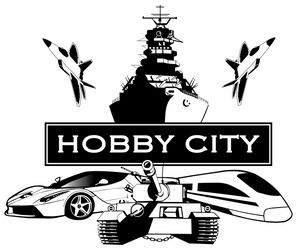Hornby R3948 BR Cl.370 APT NDM '49004'
Sold out
Original price
$286.95
-
Original price
$286.95
Original price
$286.95
$286.95
-
$286.95
Current price
$286.95
| /
Hornby R3948 BR Cl.370 APT NDM '49004'
The original full specification configuration for the APT-P was to comprise fourteen cars with the two power (Non-Driving Motor) cars marshalled at the outer ends of the sets. However, it soon became clear that the use of two pantographs, one on each power car, was unsuitable for the overhead power (OHP) wires in place on the West Coast Mainline at that time. Using two power cars in the middle of the train became the only operational option for British Rail, effectively cutting the train in half and this created two 1+6 formations within the APT, consisting of a DTS, TS, TRBS, TU, TF, TBF and NDM (Non-Driving Motor), through which passengers could not pass due to the high magnetic fields generated by the electrical equipment contained in the NDM. Theoretically, by siting the NDMs centrally, the preceding vehicles would clean the track, aiding adhesion over sections of the WCML such as Shap and Beattock. The arrangement would also help to mitigate the effect of suspension buckling with the train, but by far the most useful aspect of the central position of the NDM was the flexibility that it gave to formation planning for the APT, making a 1+11 configuration possible in the event that a full 2+12 formation was to prove commercially unviable. The NDM was the first vehicle completed for testing in June 1977 and in mid-1978 the power car was joined by the rest of 370 001, the first half set, for testing on the WCML. Unveiled to the press on June 7th but, hampered by industrial action, it was to be February 1979 before various formations of the full train were marshalled to test different aspects of the APT. The NDM was of a monocoque construction, with a low centre of gravity and was built from light steel. Featuring deep side skirts to provide the rigidity required of the vehicle, the BR APT Design team included tilt with the NDM in line with the rest of the train, as to not do so would add an extra 15% drag to the NDM. Link rods were also fitted between the bogie and the pantograph so as to keep the pantograph head parallel to the tracks at all times, maintaining even contact with the OHP. With different configurations being tested by BR, from the full 2+12 passenger sets to shortened 1+4 test formations, the composition of the sets soon became so disrupted that it was only really the DTS, TBF and NDM cars that remained constant, particularly during the project's latter years. Far exceeding its budget, by 1984 APT-P had effectively reached the end of its development program, the fleet of six sets had been reduced since March 1983 with parts being canonicalized to keep the remaining vehicles running. At the end of May 1985 the APT-P was withdrawn from traffic, with the Intercity Development Train (APT-D) continuing in service until December 1986.Tech Specs
- Item Length - Without Packaging (cm)
- 27.6
- Item Scale
- 1:76 Scale 00 Gauge
- Finish
- Painted
- Colour
- Grey
- Gauge
- OO
- DCC Status
- DCC Ready 8 pin socket
- Operator
- BR
- Designer
- BREL
- Livery
- Intercity Executive
- Minimum Curve (mm)
- Radius 2
- Motor
- 5 Pole Skew wound
- Motor
- 5 pole skew wound

